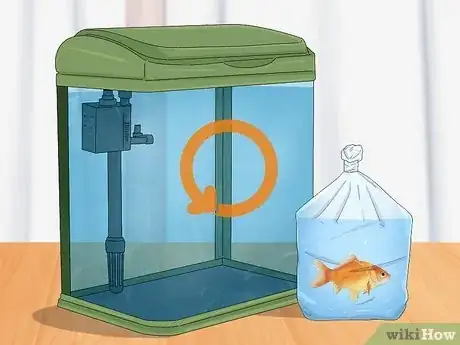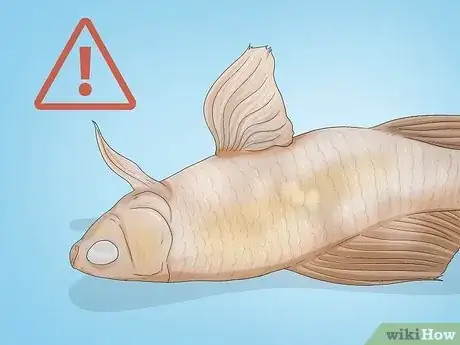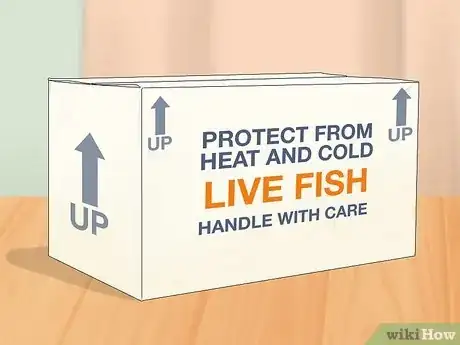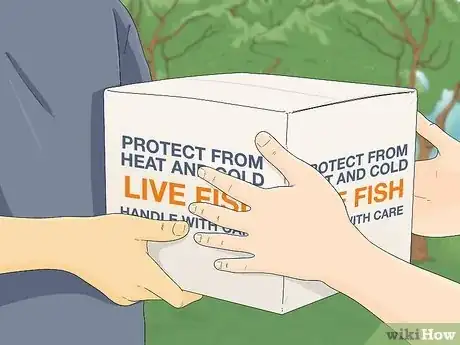wikiHow is a “wiki,” similar to Wikipedia, which means that many of our articles are co-written by multiple authors. To create this article, 17 people, some anonymous, worked to edit and improve it over time.
This article has been viewed 3,536 times.
Learn more...
Are you interested in adding a new aquatic friend to your home? Or perhaps you're just adding some fish to an existing aquarium? Regardless of your experience, purchasing fish is an essential part of fishkeeping and can be a stressful endeavor. Between the huge variety of fish to choose from and the diseases that can effect them, it might seem like a daunting task. But knowing how to find the best fish can help you find a happy and healthy new pet to add to your aquarium.
Steps
Before Purchasing
-
1Research what type of fish you want. Before you go and buy a new fish, you should have a plan. Decide on what type of fish you'd like and understand what their care requirements are. You should know their temperature range, minimum tank size, ideal water conditions, and how many should be kept together before you start spending any money.[1]
- If you're looking to add fish to an existing aquarium or want tankmates for your new fish, research what fish do well together first. Some fish have a reputation for being aggressive towards others and some might just be shy around different species.
- It can also be a good idea to know how to tell the sex of your fish of choice. Some fish, like guppies or platys, are prolific breeders and if you keep males with females you might end up with a huge amount of unwanted fish babies. Know how to identify them so you can buy fish of only one sex if needed.
-
2Set up and cycle a tank before buying fish. Putting your new fish straight into a new aquarium is a recipe for disaster. Some fish might be fine, but it will greatly increase your chances of ending up with sick or dead fish. Buy an aquarium that's the proper size for the fish you want and have it ready to go before you bring home your new aquatic pets.
- It's critical to set up a tank beforehand due to the nitrogen cycle in the water. Cycling a tank means having the right bacteria in the water to establish a nitrogen cycle. This helps keep the water safe and stable for your fish, otherwise the ammonia levels in the water can become toxic in mere days after adding fish.
Buying From a Store
-
1Find a good store. Before going to the first pet store you see, look for local fish stores in your area first. These shops often have healthier fish kept in better conditions and employees that are knowledgable about fish.[2] General pet stores and chain pet stores can also be a good spot to buy fish, but keep in mind their staff might not know the requirements of each fish they have in stock. Be wary of incorrect or potentially harmful advice.
-
2Look for signs of illness or injury. You probably don't want the extra stress of bringing home a sick fish, especially if you already have fish at home the disease could spread to. Inspect the fish in the store for common signs of parasites or illness.[3]
- Fish may be sick if they have one or more of these symptoms:
- Clamped fins
- Heavy breathing or gasping at the surface
- Inactivity
- Flashing, or scratching itself on rocks, ornaments, or sand.
- A bloated belly or scales are pointed outward like a pine cone
- Inability to swim properly
- Loss of color
- Stringy or cottony patches on their scales
- Small white spots on their body
- Check the fish for signs of injury, like torn or missing fins. These wounds often heal on their own, but leave the fish vulnerable to infections that can be much more difficult to treat.
- If you want to take these fish home, you have to know how to take care of them. Research how to treat different fish diseases and what medications you might need.
- Fish may be sick if they have one or more of these symptoms:
-
3Check for dead fish. Due to the stress of shipping and living in crowded tanks, it's common to spot a few dead fish in most pet stores. It's an unfortunate reality, but a couple of dead fish isn't a reason to worry. But if there is a large amount of dead fish, this can be a sign of wide-spread disease or very poor water conditions in the tanks. Consider going to a different store if there's more than a few dead fish in their aquariums.
- If one tank in particular has a lot of dead fish, there is likely a disease outbreak or other issues with the tank. Avoid purchasing any fish from these tanks.
-
4Observe the tanks. Once you find the fish you want, stand and watch them for a few minutes. Take note of any odd behaviors or if any fish are particularly aggressive towards the others. Some fish will mellow out when rehomed into a bigger tank, but avoid them if you don't want to risk fighting or injured fish in the future.
-
5Purchase your fish. Find an employee in the aquarium section or other part of the store and ask them for assistance with buying fish. Let them know which species of fish you want and if you have any color or pattern preferences. Some stores will let you pick out specific fish in a tank, while others will only select random ones.
- Consider asking the employee what the water conditions in the tank are like. If the pH, temperature, or salinity are drastically different from your tank at home, you might have a harder time acclimating your new fish. [4]
Buying Online
-
1Research which websites have a good reputation. Buying fish online can be more convenient than shopping in person and is typically better for finding rare or specialty fish breeds. Unfortunately, you can't go and see the fish for yourself, so you'll have to rely on the experiences of others to find good sellers. Check reviews and ask other fishkeepers for recommendations on quality stores. [5]
- If you're looking for a specific species of fish, consider buying directly from breeders.
-
2Check for a shipping guarantee. Shipping live animals can be risky and fish are no different. See if the store has a survival guarantee or a refund policy. Since you can't personally check the health of the fish, this is important if the fish arrives dead or sick. You can contact them and get a refund if something occurs during shipping.
-
3Expect a high shipping cost. Sending live fish through the mail safely and quickly costs a lot more than simply shipping a package. Purchasing fish online almost always results in a very high shipping cost to guarantee a hasty arrival. Be prepared to spend at least $30 USD on shipping alone.
-
4Select and purchase your fish. Once you've found a store you like, browse their selection of fish and choose which ones to buy. Enter your shipping and payment details, then get ready for your delivery. Be sure you are home when the package is expected to arrive so your fish aren't sitting in a bag longer than they have to.
- If any of your fish arrive dead or noticeably ill, take some pictures as proof and contact the seller as soon as you can. Most refunds require evidence of the fish in question and need to be processed quickly.
Warnings
- Do not put crayfish with any other fish. They will eat your fish.⧼thumbs_response⧽
Things You'll Need
- Fully Set Up Fish Tank & Equipment
References
- ↑ https://www.aqueon.com/articles/11-questions-to-ask-before-you-buy-new-fish-for-your-aquarium
- ↑ https://blog.aquaticwarehouse.com/buy-fish-pet-shop/
- ↑ https://simplyaquarium.com/fish-diseases/
- ↑ https://www.petplace.com/article/fish/general/what-you-need-to-know-before-buying-fish/
- ↑ https://aquariumblueprints.com/what-to-look-out-for-when-buying-aquarium-fish-online/






































































